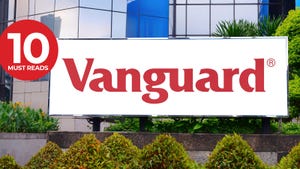Tools of the Trade: Using LinkedIn to ProspectTools of the Trade: Using LinkedIn to Prospect
For Mary Patch, LinkedIn is more than a website used for job hunting—it's a tool she actively uses to build her firm’s qualified plan business
August 1, 2010

Tools of the Trade: Using LinkedIn to Prospect
LinkedIn is more than a website used for job hunting. For Mary Patch, it’s a tool she actively uses to build her firm’s qualified plan business.
Advisors often get busy and retirement plans aren’t their expertise, so they have a tendency to walk right past the opportunity, says Patch, director of business development for the qualified plan business at Steele Capital Management in Dubuque, Iowa. Using LinkedIn, Steele Capital has been able to match potential prospects with advisors who, in turn, have brought Steele Capital 401(k) business.
Since beginning the effort 18 months ago, Steele Capital has sent more than 250 leads to advisors, which has resulted in dozens of meetings with prospective clients and a handful of actual clients. “We’ve made some significant revenue on the three or four we’ve brought in,” Patch says.
Indeed, Steele Capital is one of many firms that use LinkedIn to build business. “LinkedIn is so accessible that not to use it is leaving money on the table,” says Debra Forman, a certified executive coach with Pinstripe Coaching in Toronto.
There are many ways for advisors to use LinkedIn, although you may be limited to some extent by your compliance department, so it’s important to do some digging on that end before you get started. While waiting for that green light, however, read on for some tips on how to effectively use LinkedIn to prospect for new business.
Create a strategy for using social media
It’s easy to get sucked into spending hours and hours on LinkedIn, but it’s important to figure out how to budget your time effectively so that you’re not putting in gobs of time with little or no return.
“If you invest the time, you have to get something out of it,” says Bill Corbett Jr., president of Corbett Public Relations Inc., Floral Park, NY.
Manage your connections
For starters, work on building your list of connections. Some believe it’s a good idea to be connected to anybody and everybody you know with the idea that the more people you know the greater the opportunities. Others, however, disagree, saying that having a targeted connection list is more manageable for prospecting purposes. Both ideas have merit; it just depends on how you want to proceed.
Use your connections effectively
One of the best ways to prospect on LinkedIn is through warm introductions. Tell your connection that while you were on his page you noticed five, 10 or 15 people who seem interesting, says Richard Weylman, chairman and chief executive of Boca Grande, FL.-based consulting firm Weylman Inc., a consultancy to investment advisers. Then find out which of them your connection actually knows and is willing to introduce you to.
Even if an introduction doesn’t actually lead to business, it’s a win-win because the more people you know, the more chance you have of getting business down the road, says Trevor Callan, chief executive of Callan Capital, a registered investment advisor in La Jolla, CA, which uses this strategy.
Advisors at the firm track various deals in the marketplace such as mergers, initial public offerings and venture-backed transactions. Then they use LinkedIn to cross reference the top executives involved in the deals. Once they have the executives’ names, they use LinkedIn to figure out who at the firm has connections to the executives and who can provide a warm introduction.
“It’s not a silver bullet but it’s certainly gotten us in front of certain people we wouldn’t have otherwise gotten in front of,” Callan says.
Keep your profile updated
There’s a drop-down bar on the home page of LinkedIn where you can provide a host of information about yourself such as your job history, your education and affiliated websites. You also can post updates about yourself or your business.
“It’s prime real estate. Use it so that people can get a glimpse into what expertise you have. Lead your prospects to what you want them to know,” says Forman of Pinstripe Coaching.
Join groups
LinkedIn groups, which are accessible from a drop-down menu on the home page, can help put you in touch with people who share your interests. This functionality is something Brad Pine, a wealth advisor with the Bradford Pine Wealth Group in New York City, believes is useful because it’s a way to get in touch with people who you think could become potential clients. You can participate in group forums and even use the groups to build connections. “It’s about creating a following,” he says.
Post answers to questions
There’s also a section on LinkedIn, accessible from the “More” drop-down menu that allows you to answer questions. Every time you do, always include your name, the name of your business, your e-mail, your website and your phone number, says Forman. Take extra care not to do anything goofy because nothing dies on the Internet and it detracts from your credibility if someone does a Google search and finds it.
Request recommendations
If you ask current clients to recommend you, that information will be posted on your profile and will lend validity to your business, says Joel Goldstein, president of Peer Marketing Group in Orlando, FL. If they recommend you on LinkedIn, you also can mention it in other mediums such as your website, he says.
Create an e-mail list of contacts
One of the good things about having a well-thought-out connection list is you can export the e-mails of your contacts to an Excel spreadsheet. From a marketing and prospecting perspective, you can then send out direct e-mails with (attached) interesting articles, your newsletter, topics for thought and events you are hosting, says Corbett of Corbett Public Relations.
Decide whether paying for an upgrade makes sense
LinkedIn offers a ton of networking possibilities for free, and for most advisors that is enough, but there are limited circumstances where upgrading should be considered. The particular plan will depend largely on an individual advisor’s needs.
Take, for example, Robert J. Rall, a certified financial planner with Rall Capital Management, a registered investment advisor in Merritt Island, FL, who upgraded his account so he could directly e-mail people outside his network and, in the process, try to compete for rollover 401(k) business.
Using LinkedIn’s free services, Rall—whose office is near the Kennedy Space Center—has been able to follow the news of local businesses associated with the shuttle program, many of whom are downsizing. He’s also able to view, at no cost, recent departures of LinkedIn members who have updated their status. By opting for a Business Plus account, which costs him $500 a year, he’s also able to send 10 messages a month to people he’s not connected to, thereby bypassing the need for a direct or intermediary connection.
He’s not sure yet whether the investment will pay off, but figures it’s better than cold calling, which is often ineffective. “It’s a brand new path that I’m going down, but it’s becoming such a prevalent situation in our local economy that I wanted to make sure I could contact these people,” he says.
Questions or feedback? Please email us at [email protected].

You May Also Like





